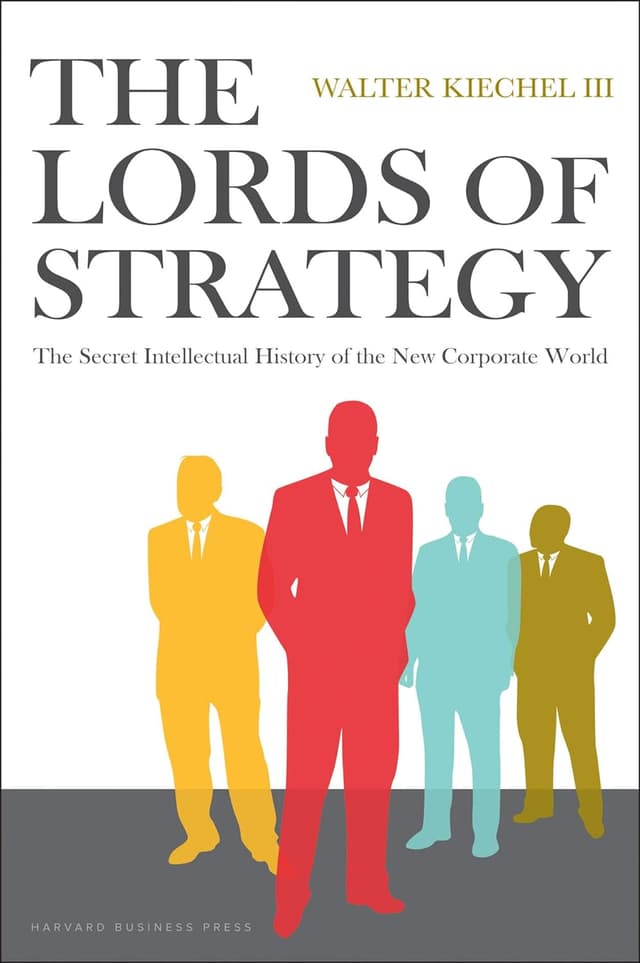Noah Brier | September 22, 2022
The Adobe/Figma Edition
On growth, M&A, and innovation
Recommended Products

The book covers the first phase of strategy's history, focusing on positioning. It talks about the experience curve, market share and whether parts of the business should be built up or sold off.

A book covering the scenario where a company with a cash cow business struggles to innovate in ways and gets disrupted by an upstart. It explains how and why this happens through various examples and theories.

A lesser-known book that delves into corporate strategy and structure, providing insightful guidance on the strategic management process from a seasoned expert in the field.
Noah here. The biggest news in the world of tech over the last week has been Adobe’s $20 billion purchase of the design tool Figma. In addition to minting a large number of multimillionaires, the acquisition offered a prime opportunity for Twitter thread opinining, something that’s been otherwise difficult in this year’s down software market.
Friend of WITI Drew Austin summed it up well:
I’m not going to link off to the threads here, and it’s not fair to say they all lacked insight. Still, my overall takeaway from most of what I saw was that they came down to the conclusion that Adobe failed to innovate and, in that absence, was left to overpay for a disruptive product.
Why is this interesting?
It’s not!
This is what big companies do. If it was easy to continue to innovate after establishing a core product and business, the corporate world would be without acquisitions. But when you have a product line like Adobe does, and it’s bringing in billions in revenue as Photoshop has been for many years, it’s very hard to decide you’re going to veer from that course.
Something about the onslaught of threads triggered two connected thoughts that have been rattling around in my brain. The first is about tech’s aversion to history and academia—a rather ironic allergy given the important role that universities have played in the history of computing and the internet. For better or worse it’s my experience that there’s a pervasive attitude in the software world that what’s happening today hasn’t happened before.
But that’s definitely not true, and Adobe/Figma is a near-perfect case study. This scenario—a company with a cash cow business struggles to innovate in the ways needed and is disrupted by an upstart without the baggage—has been well-understood for decades. It’s covered in Clayton Christensen’s popular Innovator’s Dilemma (published in 1997) as well as Igor Ansoff’s lesser-known Corporate Strategy (published in 1965). Moreover, there’s a pretty good argument that the whole consulting industry exists to try to help companies answer this exact question. From the excellent book Lords of Strategy:
The first phase of strategy's history, from its beginnings in the early 1960s until approximately the mid-1980s, was about positioning. Where was your business situated on the experience curve, charting your costs compared with competitors'? Where did a particular business sit in the portfolio of businesses your company owned, according to measures like its market share? Should it be built up or sold off?
Boston Consulting Group’s growth-share matrix, which helped the company succeed way back in the 1970s, is specifically focused on this phenomenon. (If you missed my WITI on the history of the 2x2, I also talked about the matrix there.)
It’s not just the aversion to history that had me thinking. I have also been wondering if part of what we’re seeing in tech is that what we saw as transformative and innovative in company-building was actually just youth. Adobe, at 40, is practically geriatric in Silicon Valley years, but Google is now a 24-year-old company, and even Facebook reached voting age this year. These companies were unquestionably some of the fastest-growing and most disruptive in history, and whatever happens next won’t change that history. But we should also probably be prepared for them to look more like the kinds of conglomerates of yesteryear. In fact, there’s a pretty good argument they already do. Even before Figma, Adobe had built its product portfolio primarily from acquisitions. The same goes for Facebook and, to a lesser extent, Google.
There’s nothing wrong with that, but it’s also not an original approach. These companies are practicing this kind of inorganic growth because it works. Companies aren’t blind or stupid because they fail to build a disruptive product. I promise many smart folks inside Adobe have been arguing for a Figma-like version of Photoshop for the last decade-plus. They didn’t make it happen because it’s hard not to milk a cash cow, which has been well known in the wider world of business for a long, long time. (NRB)
Figma Analysis of the Day:
One of the interesting points on the Figma deal came from Ben Thompson’s Stratechery. He pointed out the role of experimentation and new tech in Figma’s rise:
Sketch was not a disruptive product: it was, like Adobe’s products, a desktop app; it just delivered a solution to an emerging product category that Adobe was slow to respond to. Figma, though, was something completely new: the company, which was founded in 2012, made a bet on the browser and spent a full four years building v1 of the product. This included writing the editor in C++, cross-compiling it to JavaScript using the asm.js subset that let it achieve desktop like control of memory and performance, and building its own rendering engine from scratch using WebGL — which had only been released in 2011. It was the epitome of leveraging new technologies to compete on a new vector, which in this case was collaboration.
(NRB)
Quick Links:
—
WITI x McKinsey:
An ongoing partnership where we highlight interesting McKinsey research, writing, and data.
How to remove unconscious bias from the workplace. When it comes to job performance, unconscious bias can be more harmful than explicit discrimination—and everyone at work suffers for it.
Read and see why tackling this problem benefits everyone.
—
Thanks for reading,
Noah (NRB) & Colin (CJN)
—
Why is this interesting? is a daily email from Noah Brier & Colin Nagy (and friends!) about interesting things. If you’ve enjoyed this edition, please consider forwarding it to a friend. If you’re reading it for the first time, consider subscribing (it’s free!).


